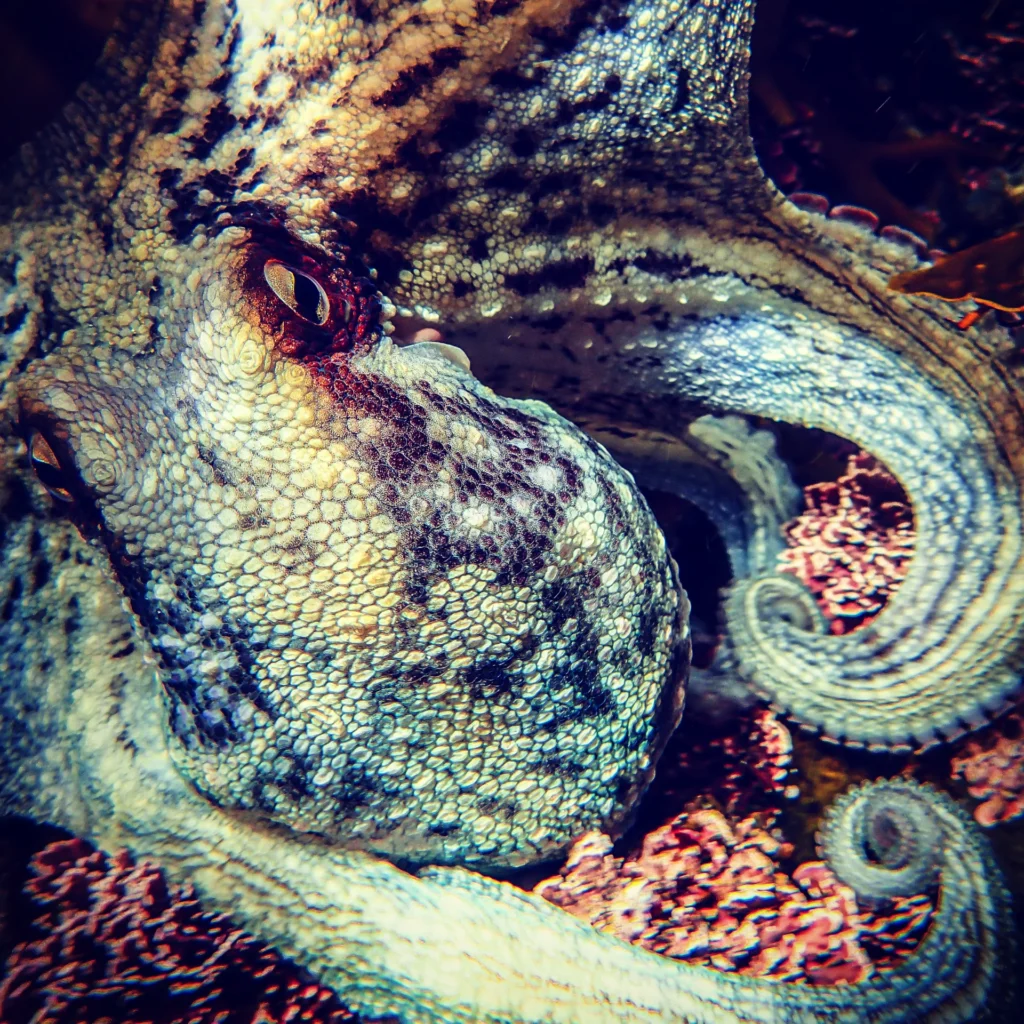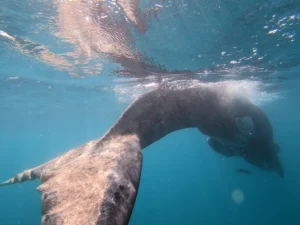Belonging to the class Cephalopoda along with squid and cuttlefish, the common octopus (Octopus vulgaris) is a fascinating mollusk inhabiting temperate and tropical oceans across the world. Renowned for its complex behaviour and remarkable adaptability, this species has long captured the curiosity of scientists and marine enthusiasts alike.
The common octopus has a distinct bulbous head with large, expressive eyes, equipped with highly developed vision. Its soft body is supported by a cartilaginous “pen,” sporting eight long, dexterous arms lined with suckers that aid with locomotion and hunting. Renowned for its capacity for camouflage, the common octopus is capable of changing colour, pattern, and texture to blend with its surroundings. This skill not only serves as a defence mechanism against predators but also assists in stalking prey. As solitary creatures, their hunting strategies often involve ambush and surprise, and they have been observed using their arms to probe crevices and extract prey.

Common octopuses are opportunistic predators, and feed on a diversity of prey, including crustaceans, mollusks, and fish. Moreover, they are predated upon by a variety of other creatures, such as seals, otters, seabirds and sharks. Common octopuses are tolerant of a wide range of salinity and temperature, ensuring adaptability to various environmental conditions which allows them to thrive in diverse habitats, from rocky reefs to sandy seafloors. While commonly moving along the seafloor keeping their undersides protected, common octopuses can also jet propel themselves through the water by expelling water from their mantle cavity.
With a relatively short lifespan, the common octopus lives 1-2 years, reaching weights of approximately 9kgs. Common octopus have extensive nervous systems and sizeable brains, with each individual possessing approximately 500 million neurons, a cognitive capacity that rivals that of dogs. Their intelligence enables them to differentiate between varying levels of brightness, successfully navigate intricate mazes and identify specific individuals. Moreover, they exhibit fascinating behaviours such as cultivating “gardens,” wherein they gather diverse marine algae and accumulating collections of shells and rocks.

While common octopuses’ populations are currently not considered threatened, their vulnerability to overfishing highlights the importance of sustainable fishing practices. In recent years, scientists have made significant strides in uncovering the genetic basis for the octopus’s remarkable abilities, shedding light on the molecular mechanisms behind their colour-changing abilities and intelligence. Research in fields such as neurobiology, ecology, and biotechnology continue to advance the understanding of this enigmatic species.
The common octopus makes for an enjoyable sighting for snorkelers and freedivers alike, while furthermore holding significant cultural and economic importance in South Africa. The species plays a vital role in the country’s fisheries industry, supporting the livelihoods of coastal communities through both artisanal and commercial harvesting. Sustainable management of octopus fisheries is therefore imperative in order to conserve and maintain their populations and ensure long-term viability.



